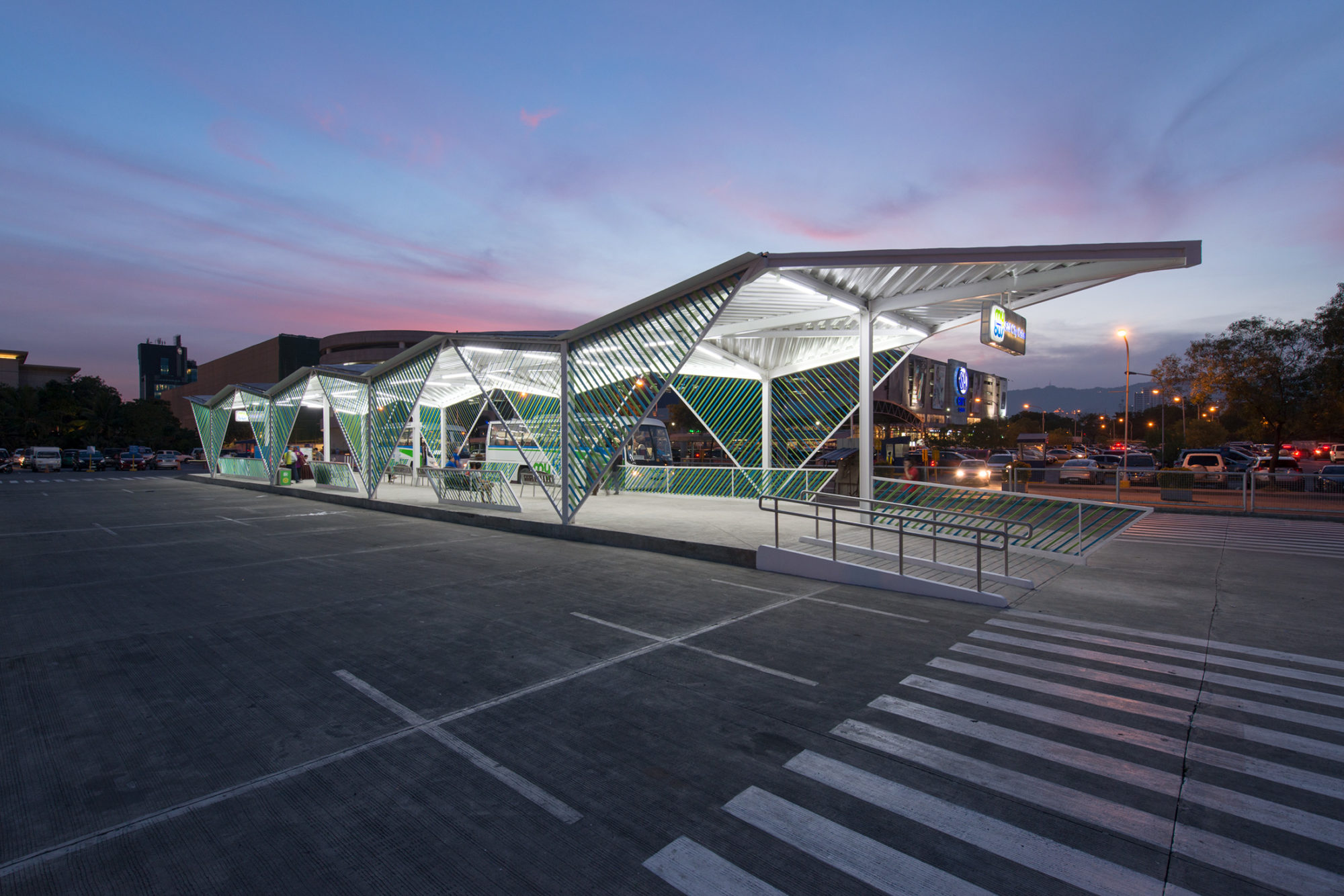The rains in Cebu City, Philippines, are formidable: great pelting sheets that arrive without so much as a thunder crack. In this historic, heavily urbanized coastal city of one million residents, the first pieces of infrastructure to deal with deluges are the streets, which—lacking adequate flood drains—collect and distribute the rainwater wherever the pavement travels. To manage the rain is to buy the streets and their users a measure of calm.
Caza, a Brooklyn-based architecture studio with offices in Manila, Lima, and Bogotá, won a commission to design a bus rapid transit system for Cebu. Firm principal Carlos Arnaiz knew that if he was going to attack gridlock, he would have to attack rainwater at the same time. So he wove baskets. Big ones.
Each bus station’s roof is an intricate weave of beams that act as passages during downpours, emptying their freight into cavities below the station platforms. “The roof is folded in such a way that the movement of water is channeled alternatingly to one side of the roof every eight meters, helping alleviate the water pressure on the roads,” Arnaiz says. “It also directs water away from passengers as they go from the covered platforms to the buses.”
The BRT project marks Caza’s return to Cebu. The firm designed the 100 Walls Church in 2012, a sand-washed meditation on sanctuary and the sacred, expressed through slabs arrayed like dominoes in a Rube Goldberg machine. “At the opening of the church, I was able to meet many of the city’s civic leaders,” Arnaiz says. “We had a dialogue going on after [the church’s completion].”
Working from a planning study conducted by the American engineering firm Parsons Brinkerhoff, Caza designed four modular station solutions—each suited to different street parameters, but each sharing the basket-like designs for shelters, as well as for each platform’s furniture pieces, including benches, trash bins, signage, and lighting. The motif is not some Western architect’s caprice, but rather a contextual link to Cebu’s tradition of basket-weaving. “We didn’t want our stations to feel and look simply like bus stations,” Arnaiz says. “We wanted them to make cultural sense.”
Though burdened with far greater riderships than Cebu’s system, the BRT schemes of Mexico City and Bogotá offered lessons in what Caza wanted to avoid, at least aesthetically. “Their stations were all a little bit too bulky,” Arnaiz says. “We wanted our stations to be more open. We wanted to steer away from the often uninspired, technocratic aesthetic.”
A central terminal will follow the station rollout, replete with a dizzying viewing tower that affords views of the cityscape—and the scope of the BRT system. In Caza’s vision, the tower will not only act as an exclamation mark on the civic project, but also as a focal point for Cebuanos, with a civic center and on-the-go dining options. Arnaiz hopes the tower especially gives citizens the chance “to see the connective nature” of the project. This is no doubt a welcome improvement, in a country with a polarizing president and ongoing drug war that has led to government executions without the benefit of judicial proceedings or due process.
“We think transportation design should be a cultural solution,” he says, “not only a practical infrastructure solution.”

